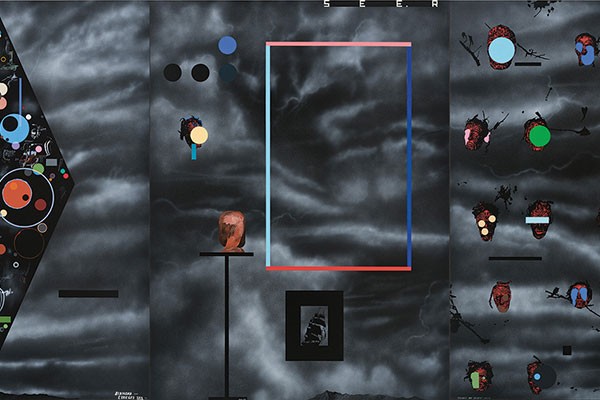To kick start your artistic side for 2016, head to Exploded Worlds at the Dunedin Public Art Gallery. This exhibition is a kaleidoscope of vivid colour, contrasting canvases, and mixed-up mediums. Offering an ‘exploded view’ of art, the gallery combines works of drastically differing colour, material, size, and context, which come together to create a slightly haphazard but fascinating experience.
Check out the bright and cheery "Lattice no. 45" (1978) by kiwi artist Ian Scott, which hangs in sharp contrast to Picasso’s simplistic "Danse des Faunes" (1959), where abstracted figures prance in a circular motion on the canvas. Juxtaposing the black and white with the bright and the international with the local challenges you to see each work in a fresh way. Plus standing in front of a Picasso is always a buzz.
"The Haymaker Series I-V" (2012) painting by Shane Cotton dominates the central space, an enormous stretch of cloud-like grey canvas dotted with futuristic, digital symbols, rusted objects and native birds. Vast enough to feel lost in, Cotton’s landscapes - or in this case, a skyscape - encompass themes of culture and memory. It’s easy to become immersed in the gallery environment seated between Cotton’s work and the colossal "May and the birds of ice. The moon drowns in its voices of water." (1970) by Ralph Hotere. Hotere’s works are characteristically dark in tone, and this beauty is no different, comprising of immense deep blue spheres floating on a black canvas. The title of the work taken from a haiku by Bill Manhire. Stare at this giant work long enough and you’ll begin to feel an odd floating sensation, the words LOVE and HATE becoming apparent in the void.
Completing the trio of large-scale kiwi works hangs "The Five Wounds of Christ No 3" (1977-1978) by Colin McCahon, one of New Zealand’s most prolific and adventurous 20th century painters. McCahon returned recurrently to scenes of crucifixion throughout his career, this stark work a demonstration of his heavy abstraction and bold use of black and white. The sparse visual language used by McCahon in his visual portrayals of biblical stories isn’t for the faint of heart, but his works contain enough mystery to keep you searching for clues amongst the squares and stretches of canvas.
If you’re new to art and find this a bit heavy, never fear - the exhibition as a whole is fresh, fun, exciting, and accessible. Careful placement of works continues throughout the exhibition, ensuring fresh contrasts and unexpected similarities around every corner. This is, indeed, an art world exploded - into quirky new comparisons and suggestions.



